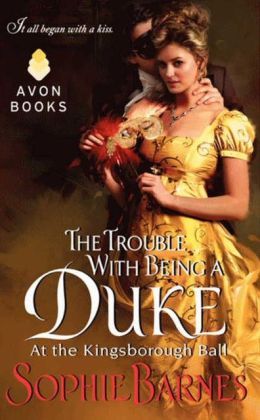Belle of the (Kingsborough) Ball: Sophie Barnes Waltzes into Print
AS SEEN ON RT BOOK REVIEWS, AUGUST 29, 2013 | PERMALINK I recently had the pleasure of visiting RT Book Reviews for a lovely chat with my editor, Erika Tsang. Here's what we had to say to each other:
I recently had the pleasure of visiting RT Book Reviews for a lovely chat with my editor, Erika Tsang. Here's what we had to say to each other:
Erika: I’m delighted to introduce
everyone to Sophie Barnes, one of Avon’s rising stars. How does it feel,
Sophie, to be a multi-platform author?
Sophie: I’m still waiting for it to sink in. Having had one of my Impulse books, How Miss Rutherford Got Her Groove Back,
available at Target, I know how wonderful it is to walk into a store
and find your book there on the shelf. I’m all for digital, but being
fond of paper books, this move has really meant a lot to me. It’s
exciting to know that my books will be widely available to readers both
digitally and traditionally.
Erika: The Trouble With Being a Duke started out as an idea for a novella for an anthology. How did it become the start of a trilogy instead?
Sophie: Well, after submitting my
proposal for the anthology, I received a phone call from my previous
editor inquiring if I’d be interested in turning it into a three-part
series for print. My answer was, “Absolutely!” Of course, I had to
expand on my plot in order to do this, but the idea of using the
Kingsborough Ball as the starting point for each book was an intriguing
one. The Trouble With Being A Duke is the story that stays true
to my original plan for the novella. For the sequels, new characters
were invented, and since I wanted to avoid too many plot overlaps
between the three books, I decided that this would be easier to achieve
if the heroes and heroines were not related to each other. Instead,
they’re friends and acquaintances who are tied to each other by
secondary characters and by the Kingsborough Ball shooting, at which
they are all present.
Erika: Some writers think
publishing with a digital-first imprint is different than a traditional
imprint. What do you think? Are there differences? What hasn’t changed?
Sophie: The most tangible
difference is the ‘bookstore element,’ since I’m hoping to attract those
readers who don’t buy their books online. But even with Impulse, it’s
not all digital like some might think, it’s print on demand.
As far as the writing and publicity goes however, you’re absolutely
right: there’s very little difference. I’m working with the same
incredible team now as I was before and I could not be happier. My work
requirement is still the same of course, although it doesn’t really feel
like work at all considering how much I enjoy it.
Erika: Is there anything you’d like to add for aspiring writers?
Sophie: I think it’s important to
believe in yourself and your ability to get published, whether digitally
or traditionally. And don’t dismiss the digital opportunities for they
might lead to print, if that’s what you’re hoping for. In my opinion,
it’s best to get your foot in the door as soon as possible. Once that’s
done, you can set a new goal for yourself. However, it is hard work —
something most people talk about doing but never actually accomplish. So
if you’ve actually finished a manuscript, well done! Continue to work
at the craft — there’s always room for improvement. After all, writing
is a continuous learning experience, so don’t be overly protective of
your work, but listen to the advice you receive along the way — changing
a scene or two may just be the key to getting published.
